Michael Portillo discovers India's most beautiful train journeys – and for once feels understated in his attire

When it comes to dressing flamboyantly, it is not often that Michael Portillo feels he’s in danger of being upstaged. And yet there were times during the filming of his latest series based on train journeys – this time around India – when the man noted for his lime green jackets, pink shirts, and stripes of all shades felt positively eclipsed.
“People wear extraordinarily bright colours in India,” he tells me. “Particularly in Rajasthan, but actually everywhere.
“In Amritsar, the range of colours of turbans was amazing. They had every conceivable shade of green, turquoise and red, a just brilliant diversity of colours – and that was just among the men!
“India was the first place I’ve filmed where I felt I just blended in. There were so many colourful episodes – and for once I wasn’t the most colourful thing in there.”
In addition to sporting his natty jackets and shirts, Portillo pushes the boundaries even further in this series, extending his have-a-go sartorial bravado to adopting local attire, a sort of 21st-century subcontinental chic.

“I enjoyed dressing in Indian clothes,” he reveals. “I loved those long single-piece garments that come down to the knees and the white pyjamas you wear underneath.”
Visually diverting though they are, the new series does not just entail shots of Portillo in ever more colourful and ethnic outfits. In the course of a sequence of four train journeys touching the north, south, east and west of the country, there is one striking scene in which he discards clothes altogether to repose in a rose petal-filled bath in a room offering a direct view on to the Taj Mahal. In another he rides a camel and is squirted by an elephant. He also dances exuberantly with a man he meets randomly on a train en route to Shimla – “He started to dance, so I started to dance; we had a lot of fun.”
In another scene, Portillo joins in the epic task of providing a meal for the 100,000 pilgrims who flock to Amristar each day to worship at the Golden Temple – the holiest shrine of the Sikh religion and “one of the most gorgeous buildings I have ever seen”.

And there are many scenes showing him mixing freely with the multitudes of humanity who ride in the bargain basement “unreserved” carriages on Indian trains and who immediately welcome him into their midst. “Although I wouldn’t necessarily recommend it for a long journey, I had by far the most fun travelling in unreserved,” he says. “You’ve got to imagine, there’s no glass in the windows, the air has to rush through and there are people in the luggage racks and hands and feet hanging down all around.
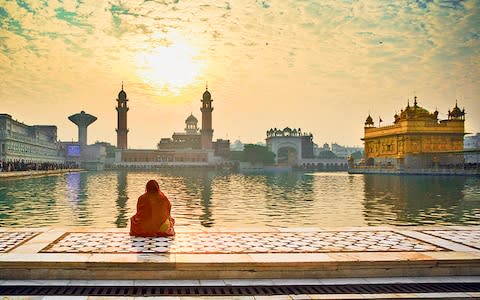
“There are three times as many people as there are seats and there’s a fantastic atmosphere – there’s generally a party going on because some of these trains might be travelling thousands of kilometres so when we went in we had a ball.
“It tells you something about the energy, the vitality, the colour, the exuberance, the uninhibitedness of India… Everywhere you go there are crowds. The energy is irrepressible. Everyone wants to know what is going on. There’s this tremendous curiosity that people have about each other.”
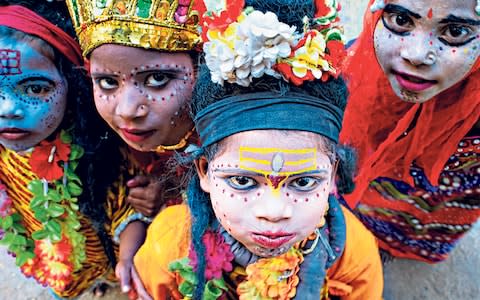
In between the light-hearted exchanges and swashbuckling bravado, Portillo does squeeze in some of the weightier themes any visitor to India will encounter, particularly if that visitor comes from Britain.
So his journeys certainly touch on the legacy of the British Raj, and he does not attempt to gloss over some of the more controversial episodes of that period. Thus in Amritsar he revisits the infamous massacre of 1919 in which British troops fired indiscriminately into a crowd containing women and children – “one of the critical events in the loss of support among Indian people for the British Raj” – and a city that was close to some of the worst atrocities at the time of the partition of India and Pakistan in 1947.

In Patna on the Ganges he retraces the route of the highly lucrative former trade in opium which stretched as far as Shanghai and over which Britain twice went to war with China (“another bad story from the British point of view”). He is moved by tales of the Siege of Lucknow in 1857 in which the vastly outnumbered British retreated to the Residency and tried (unsuccessfully) to beat back what became known as the Indian Mutiny, for which the British exacted a “frightful revenge”.
He does not mince his words. “There’s much about the British Raj which I think is disreputable. It was rapacious; it was a sort of kleptocracy and it was also racist. Indians were not treated as equals.”
That much is clear in the guidebook he uses to punctuate his journeys, Bradshaw’s 1913 Handbook of Indian, Foreign and Colonial Travel, within which there is a page containing what would have been considered useful phrases at the time, such as, “Tell the wallah to bring the punkah [fan] nearer to me” and “Tell the fellow he’s a blockhead”.
“It’s quite an incriminating document,” Portillo reflects.
That said, the former politician-turned-TV-presenter is at pains to point out that it was the British through their administration, their language, their legal system, and, yes, the railway network they introduced to the country that arguably unified India and provided the means through which independence could be achieved.
“The two biggest legacies of the Raj are the unification of India and the English language. Moreover, without the railways India would not have been connected and could not have become one country. Ghandi and other activists were able to spread the message of independence.”
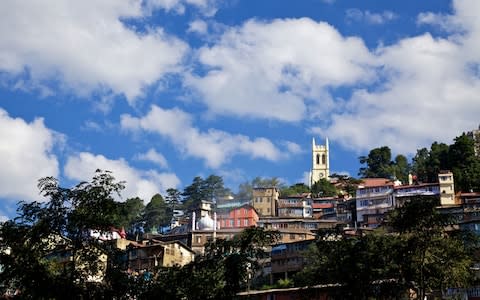
Visually the most picturesque spot evocative of the Raj is Shimla, the hill station to which at one point the entire administration would decamp in the summer months in order to escape the heat of the valleys.
“With its Vice-Regal Palace and the Mall where people promenaded (and conducted love affairs), Shimla even now still looks a bit like Surrey – with a bit of Switzerland thrown in,” he says. Scenically travelling to Shimla on the “Toy Train” – described by Steve McClarence, below – was one of the three standout moments for Portillo. The others were spending time on the River Ganges (“Hindus consider it a deity”), and travelling through the desert of Rajasthan on a journey into the “Golden Triangle” taking in the “pink city” of Jaipur, the Taj Mahal in Agra, and Delhi.

It wasn’t all pretty. There were the inevitably distressing sights of beggars and people with mutilations – though Portillo noted that this was less pronounced than on previous visits (“You certainly see a much larger slice of society that is prosperous”).
And there were many other uplifting highlights too: the beautifully elaborate stepwell in Bandikui, the modern-day marvel of hi-tech Bengaluru (formerly Bangalore), and the multi-templed city of Chennai (Madras), the original home of the East India Company.
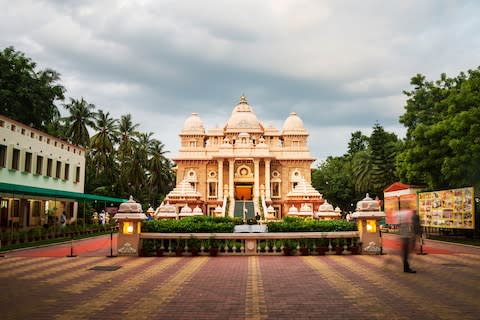
Then there are the trains, the ever-changing countryside and the stations themselves, extraordinary centres of human activity and the places where all the journeys begin and end.
Portillo urges all visitors to India to take a train journey – if not actually travelling in unreserved class, then at least getting a sense of it before retreating to the comforts of an air-conditioned compartment. He urges them not to be overly concerned about punctuality (“You will find all sorts of things that are wrong with Indian trains, but you just have to think about the scale on which they are operating”).
Above all he urges visitors to drink in the vibrancy, the vitality and the dazzling colour of it all. And possibly, like him, to add to it.
Great Indian Railway Journeys presented by Michael Portillo begins on BBC Two on Tuesday at 8pm

Trundling, twisting and turning on the ‘Toy Train’ to the Himalayas
En route to the hill station of Shimla, Stephen McClarence finds the ride as spectacular nowas it was in the days of the Raj.
As the Toy Train winds its steady way up into the Himalayan foothills, the man across the aisle peels a guava and offers me a slice. And we get talking. In his yellow baseball cap, Rajeev Kumar, a telecoms worker travelling with his wife and two children, has visited Shimla, the hill station 7,000ft up in Northern India, many times. He has generally come by car, but now he’s on a double mission. “We’ve come to see the snowfall; we’ve never seen snow and we want to feel it,” he says. “And we’ve never been on the Toy Train before.”
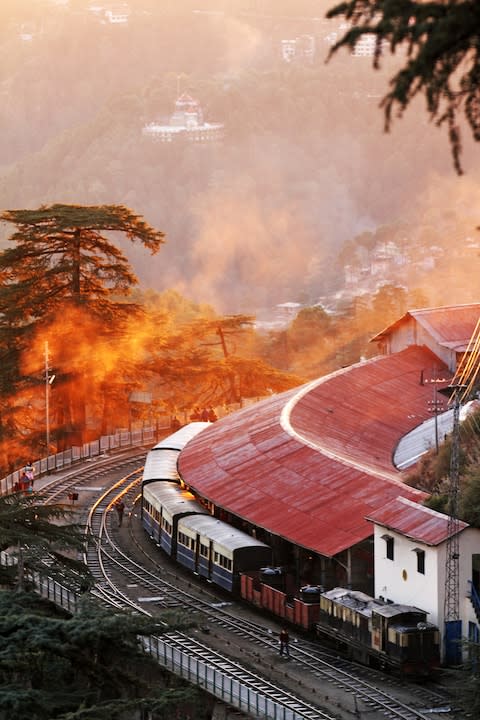
The narrow-gauge Kalka-Shimla Railway – one of the journeys sampled in Michael Portillo’s forthcoming Great Indian Railway Journeys series – has World Heritage status and is now a tourist institution. When its construction contract was signed 120 years ago this June, however, it was a purely practical project – a way of getting Victorian sahibs and memsahibs up to Simla, as the summer capital of the British Raj was then known, in comparative comfort.
Until the line opened in 1903, they braced themselves as they reached the town of Kalka for the final 60-mile uphill haul – which they generally did by tonga (small horse-drawn carriage) or dhoolie, a sort of sedan chair.
Over ginger tea at the hill station’s Gaiety Theatre, Raaja Bhasin, Shimla’s author of a book on the Toy Train, recalls childhood journeys on it. His family brought tartan rugs and wicker hampers with them and his father’s suits would be hung on hangers in a travelling wardrobe.
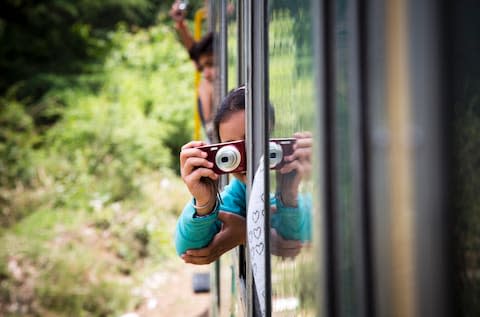
“The compartments were fairly decent, the seats were padded and hot water bottles were filled from the steam engine,” says Bhasin. “The train has made a difference to tourism here; it has become a recreational line.”
My wife and I start our journey in Delhi, driving through the early morning mist to take the connecting train to Kalka, a four-hour journey on a Shatabdi Express, although in the end smog means we arrive almost two hours late. No matter, the Toy Train, its boxy cream and sky-blue carriages suggesting a fairground miniature railway, has been held. We hurry along to find our carriage and get seated.
With a great blast on its hooter, the train sets off on its five-hour journey. There’s a holiday atmosphere. In every tunnel – there are more than 100 – children (and parents) shriek and shout “Whooo…”. The train trundles uphill, twisting and turning. It’s a serpentine switchback ride and a stunning feat of engineering, with 860 bridges, some as tall as Roman viaducts. Lulled by the train’s steady rum-tum-ti-tum-rum-tum rhythm, we pass hillside terraces of wheat and vegetables and glades of pine trees and jacarandas, silver oaks, cedars and rhododendrons, often at treetop level. Vast views of the plains open out and are then swallowed up by trees.
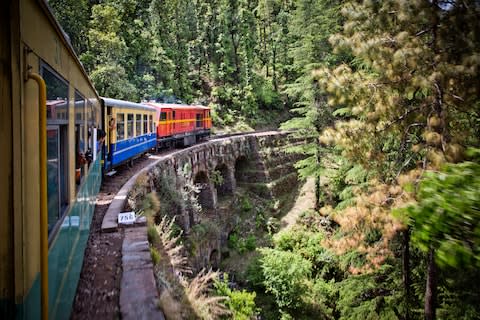
At many of the 18 spruce stations, traders are waiting with peanuts and popcorn and big chrome kettles of chai, milky Indian tea. As a tourist guide, Raju Thakur has made the trip four or five times a week for 10 years but says he’s never bored. More Europeans – particularly Britons – have come in recent years, he says.
“People watched [the TV drama] Indian Summers and decided they wanted to come to Shimla,” he says. “They were very surprised. They thought it was going to be a small village; they didn’t know there are about 200,000 people there.”
As evening draws on, a party of half a dozen men loll asleep on each other’s shoulders. The sprawling town eventually looms into view, its houses stuck to the precipitous hillsides like fridge magnets. The street lights merge into the stars.
Next morning, our balcony at the Oberoi Cecil – Shimla’s finest hotel – gives us a bird’s-eye view of the train snaking in and out of the station, where I meet Sanjay Gera, the genial, trim-moustached station superintendent. A portrait of Gandhi beams down on him in his office across from a calendar of the East Lancashire Railway.
He shows me round the station, with its curving platform, its refreshment room (soup costs 15 rupees – 20p), its Coolie Shelter for porters and a stern notice: “Complaints should be directed to Director, Public Grievance.”
Everyone seems in a good mood, though I suspect the guava-peeling Rajeev Kumar may be feeling just a little disappointed: there is no snow.
Cox & Kings (020 3642 0861; coxandkings.co.uk) offers a six-night tour to Shimla and Delhi from £1,895 per person, including international and domestic flights, a Toy Train ride up to Shimla, transfers and accommodation with breakfast. It features three nights at the Oberoi New Delhi and three at the Oberoi Cecil Shimla.


